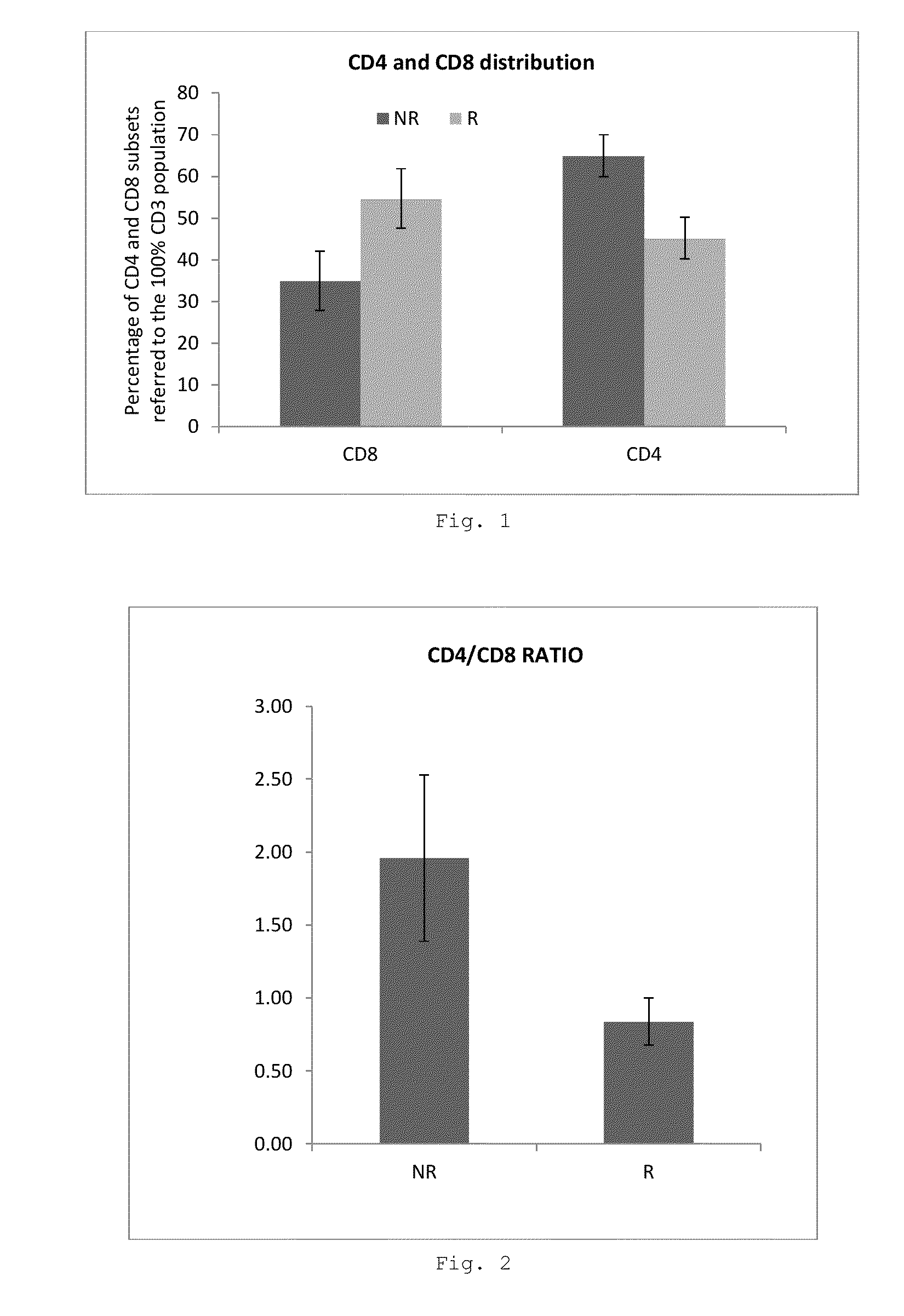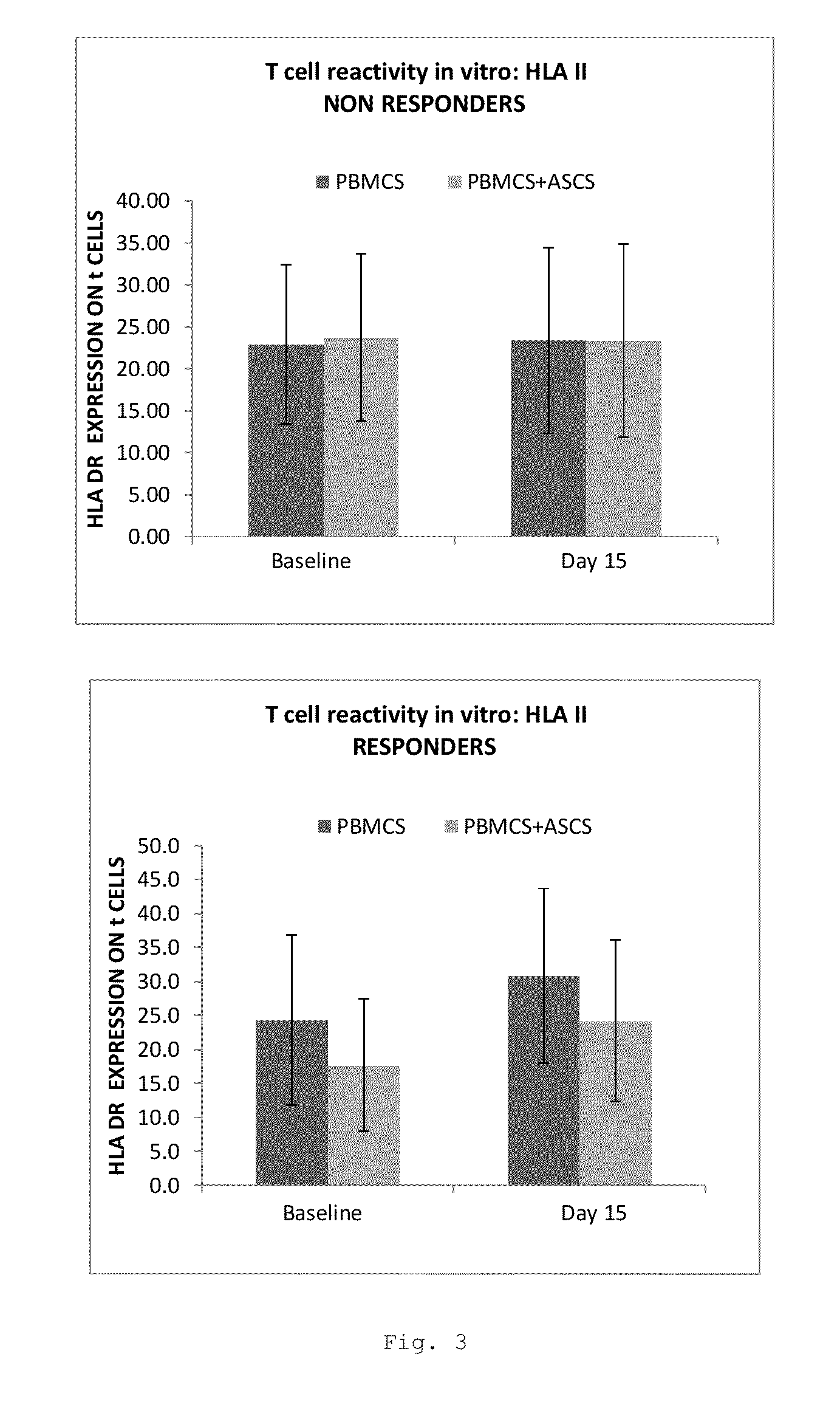Lymphocyte biomarkers for determining the clinical response to cell therapy
a cell therapy and clinical technology, applied in the field of lymphocyte biomarkers for determining the clinical response to cell therapy, can solve the problem that no exclusive individual surface markers have been identified for mscs
- Summary
- Abstract
- Description
- Claims
- Application Information
AI Technical Summary
Benefits of technology
Problems solved by technology
Method used
Image
Examples
example 1
Evaluation of Lymphocyte Biomarkers in MSC Therapy Responders and Non-Responders
[0105]Stem cell therapies have significant potential for use in the treatment of disorders characterized by tissue damage and inflammation. In order to identify blood-based markers having utility in determining patient prognosis for such therapies anal fistula in Crohn's patients is an ideal model disorder as it is characterized by tissue damage in a patient having an inflammatory disease. Lymphocyte analysis in patient blood samples was carried out both before and after treatment with allogeneic expanded adipose-derived cells (eASC).
Materials & Methods
[0106]The patient population consisted of 24 Crohn's patients having complex perianal fistula treated in a multicenter Phase I / II a clinical trial (clinicaltrials.gov identifier NCT01372969). Patients were treated with an intralesional administration of 20 million eASC. Fistula healing was determined 12 weeks post-treatment, and in case o...
PUM
 Login to View More
Login to View More Abstract
Description
Claims
Application Information
 Login to View More
Login to View More - R&D
- Intellectual Property
- Life Sciences
- Materials
- Tech Scout
- Unparalleled Data Quality
- Higher Quality Content
- 60% Fewer Hallucinations
Browse by: Latest US Patents, China's latest patents, Technical Efficacy Thesaurus, Application Domain, Technology Topic, Popular Technical Reports.
© 2025 PatSnap. All rights reserved.Legal|Privacy policy|Modern Slavery Act Transparency Statement|Sitemap|About US| Contact US: help@patsnap.com


